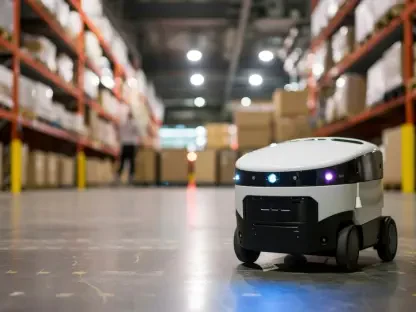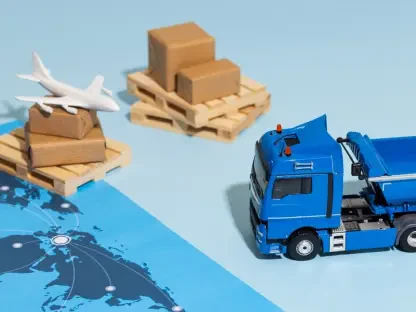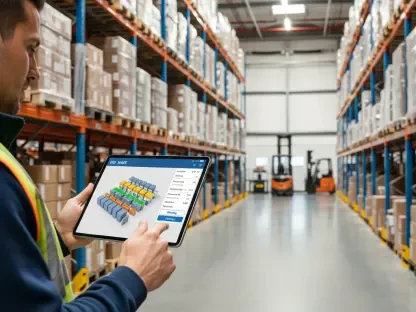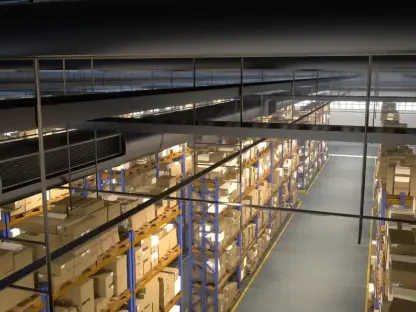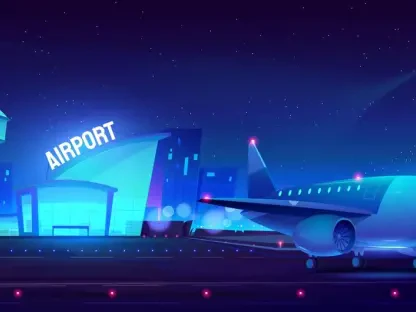New York City has embarked on an ambitious initiative to establish “microhub” delivery zones with the aim of minimizing the environmental and public safety impacts of large trucks. Last year, NYC allocated $6 million toward a plan designed to reduce truck traffic on city streets. Building upon this foundation, the New York City Department of Transportation (NYC DOT) has introduced a pilot program to create on-street microhub zones specifically for truck deliveries. This initiative is integral to NYC’s broader strategy to tackle traffic congestion and pollution caused by commercial vehicles.
The Vision Behind Microhubs
NYC DOT Commissioner Ydanis Rodriguez emphasized that the microhub program represents a pivotal element of a local delivery hub pilot project. With the primary goal of addressing the negative environmental and public safety repercussions of truck deliveries, these microhub zones were officially sanctioned on January 14, signaling the city’s dedication to reducing truck-induced traffic congestion and pollution. During the three-year pilot program, truck operators will be provided with secure, dedicated spaces to transfer deliveries to more sustainable and safe transportation modes.
The vehicles approved for these final delivery stretches include e-cargo bikes, handcarts, and smaller electric delivery vans. By promoting these environmentally friendly transportation methods, NYC DOT aims to decrease the influx of large trucks maneuvering through residential areas. The pilot program underscores the city’s commitment to innovative solutions aimed at reducing emissions and enhancing public safety. This transformative approach not only benefits the environment but also promises to improve the overall quality of life for New Yorkers.
Initial Implementation and Locations
The pilot program’s first phase sees the implementation of five microhub locations in Greenpoint, Clinton Hill, and the Upper West Side. Each delivery company operating within these zones will have exclusive rights to the designated space through an annual permit. Deputy Mayor for Operations Meera Joshi highlighted the crucial role of these microhubs, asserting that such drop-off points can help trucks avoid deeper incursions into neighborhoods and commercial areas, thereby significantly alleviating traffic congestion and pollution.
Community feedback and public outreach efforts in 2024 were instrumental in shaping the rules and design of this pilot program. On-street microhub zones will range from 80 to 100 feet in length, located within curb lanes, and marked with specific signage. These zones will provide space for package sorting and transfer to electric vehicles, cargo bikes, and handcarts. This setup not only facilitates efficient delivery operations but also helps maintain safety standards in bustling urban environments, ensuring a smoother transition to sustainable delivery practices.
Off-Street Microhub Zones
In contrast, off-street microhub zones will be situated on city-owned properties and designed to offer a broader range of amenities. These amenities will include storage for goods, space for vehicle repairs and maintenance, charging stations, covered package sorting areas, vehicle transfers, weather protection, and adequate lighting. The size of these off-street hubs will vary depending on location, and they will be managed through a license agreement with NYC authorities. This comprehensive approach aims to create multifunctional spaces that cater to diverse delivery needs while maintaining operational efficiency.
NYC DOT plans to collaborate with both small and large delivery companies that responded to the agency’s Requests for Expressions of Interest. Additional companies may be offered participation opportunities following the first year of the pilot. Participating firms, known as “microhub operators,” are expected to meet specific requirements, including utilizing the microhubs to transfer goods from larger commercial vehicles to sustainable transportation modes. This ensures a seamless integration of microhubs into existing logistics networks and supports the transition to greener delivery options.
Compliance and Monitoring
To ensure the pilot program’s success, microhub operators are responsible for maintaining a clean and orderly space, sweeping the zones weekly, and removing snow and ice. Compliance with these requirements will be strictly enforced, with the risk of permits being suspended or revoked for non-compliance. The pilot program is slated to run until 2027, eventually encompassing up to 36 on-street and off-street locations. The first five locations to launch this year will be in the Upper West Side of Manhattan, as well as under the Brooklyn Queens Expressway (BQE) in Clinton Hill and Greenpoint, Brooklyn.
The selection criteria for additional sites will take into account factors such as high-density mixed land use, proximity to truck routes and transit, connection to bike lane networks, serving priority investment areas per the NYC Streets Plan, and delivery demands expressed by delivery companies. This data-driven approach ensures that microhub locations are strategically chosen to maximize impact and improve overall efficiency. By carefully selecting these sites, NYC DOT aims to create a robust network of microhubs that effectively address the city’s logistics challenges.
Data Collection and Future Expansion
NYC DOT will meticulously monitor and collect data from each microhub to track usage and evaluate success in reducing truck traffic and bolstering neighborhood safety. Important data points will include information on the make and model of sustainable transportation modes used, average daily and weekly utilization rates, and the total number of trips completed by various sustainable means. This ongoing data collection will allow NYC DOT to make informed decisions about the future expansion of the program and its potential impact on urban logistics.
Ultimately, the microhubs pilot program forms part of a visionary effort to restructure freight distribution within New York City. The goal is to create a sustainable last-mile delivery system that reduces congestion and lowers pollution levels. Other related initiatives include the expansion of the LockerNYC program to prevent package thefts and the implementation of the “Smart Curbs” program. These complementary efforts aim to create a comprehensive framework for sustainable urban freight management, setting the stage for a cleaner, more efficient cityscape.
Broader Urban Freight Management Strategy
New York City is pushing forward with an ambitious effort to create “microhub” delivery zones to lessen the negative environmental and public safety effects of large trucks. In the previous year, NYC dedicated $6 million to a comprehensive plan aimed at cutting down on truck traffic within city streets. Building on this foundation, the New York City Department of Transportation (NYC DOT) has rolled out a pilot program focused on establishing on-street microhub zones tailored for truck deliveries. This effort is a critical component of NYC’s larger goal to combat traffic congestion and reduce pollution emanating from commercial vehicles. Additionally, the microhub initiative is designed to streamline urban logistics and enhance the efficiency of last-mile delivery services, ultimately improving the quality of life for city residents. By reallocating space for trucks and optimizing delivery operations, New York City is taking decisive steps to create a more sustainable and livable urban environment.


